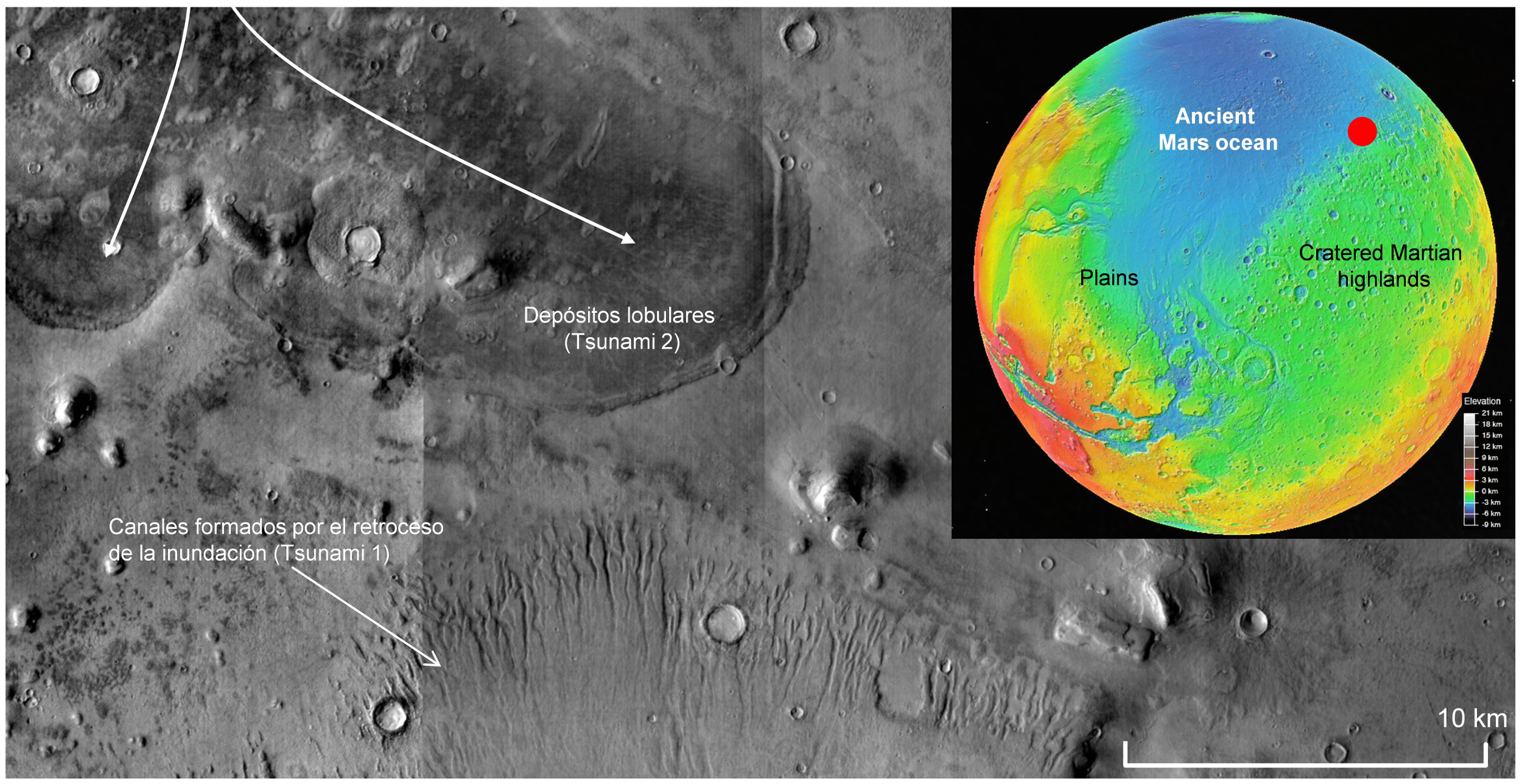International study involving Catalan researchers concludes that two tsunamis destroyed coasts on Mars
An international study with Catalan participation from the Universitat Autònoma de Barcelona (UAB) has revealed that the coasts on Mars were destroyed by tsunamis. The study has been published in “Scientific Reports-Nature” and explains that two tsunamis that were produced millions of years apart reduced the level of the ocean and made the climate significantly colder. The tsunamis appear to have been created by the impacts of 30-km-wide meteors. The discovery gives an answer to the question of why scientists couldn’t recognise its shorelines if there really had been an ocean on Mars about 3.4 billion years ago.

Barcelona (CNA).- Catalan researchers from the Universitat Autònoma de Barcelona (UAB) have taken part in an international project that concludes that two tsunamis destroyed the coasts of Mars. This revelation has answered the question of why scientists couldn’t recognise its shorelines if there really had been an ocean on Mars about 3.4 billion years ago. The tsunami phenomenon has been explained by the impact of meteors with a diameter of 30 kilometres. This, added to the gentle topography of the land in the south of Mars and the planet’s low gravity, allowed for enormous inundated areas compared to the phenomena observed on Earth. The study has been published in “Scientific Reports-Nature”, and shows that two tsunamis, separated in time by a period of millions of years, made the ocean recede and made the climate on the planet cooler, which established the conditions for the extinction of the ocean.
The research was led by José Alexis Palmero Rodríguez, from the Planetary Science Institute (PSI-USA), and includes the participation of researchers from the Department of Geology of the Autonomous University of Barcelona (UAB), Mario Zarroca and Rogelio Linares.
The tsunami phenomenon is explained by the impact of meteors with a diameter of 30 kilometres. The older of these meteors brought with it 10-metre-wide rocks that left behind big craters of chaotic deposits and excavated canals when the flooding ended. The second tsunami appears to have generated blocks of deposits with a rich quantity of ice. With the help of new high-resolution pictures, the researchers have been able to identify the morphology and the characteristics of the deposits the tsunamis left and find the explanation as to why the shorelines vanished.
The researchers from the UAB explained that the results suggest that the waves the tsunamis produced “could have been 120 metres high at the shoreline, and moved inland by distances of between 200 and 700 kilometres”. They also stated that the gentle topography of the land in the south of the planet and low gravity allowed for enormous inundated areas compared to the phenomena observed on Earth.
The researchers also highlighted the importance of obtaining samples of the ice-rich blocks that were produced by the second tsunami. This would be a pending task for future space missions, since the researchers stated that this material is “relatively near” the landing spot of the Mars Pathfinder, a spacecraft that operates on Mars. The director of the study, José Alexis Palmero Rodríguez, pointed out the fact that the blocks created by the later tsunami had clearly defined limits and that they conserve their characteristic morphology, and gave information about how they could still contain frozen brine from the ancient ocean.